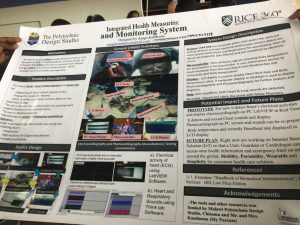This week was exciting and eye opening. Our time was spent presenting our technologies at the Polytechnic school of engineering (the Poly) and visiting the different district hospitals in Malawi. Visiting the district hospitals definitely helped us to see how we fit into the big picture (of improving neonatal and maternal healthcare) and how we can help with our technologies.
Day 5
Monday June 11, 2018
Getting Started
Monday was a long, busy, and fun day at the Poly. We made new friends and colleagues and I met up with some old friends as well!!!
Goals Accomplished
- Present our technologies to students and administration at the Poly
- Meet students and staff at the Poly
- Reunited with old Malawian friends!
We arrived at the Poly at 8 am (our usual time) and immediately began preparing our technologies for the mini showcase that was happening today. Dean Reggie, Dr. Kortum, Dr. Oden, John (A Rice Alum) and others from the Lemelson foundation were visiting to see the work that Rice 360 is doing. It was a lot of fun to be able to show our projects to the Rice 360 visitors and to see the amazing work being done by the students at the Poly as well.
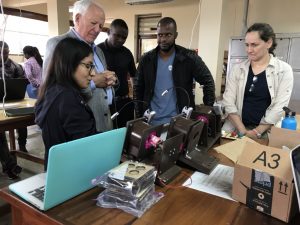
We met so many amazing people. We met a team that was working on making a drone from scratch. I also met Sanga, a guy who made a health monitoring system (mostly an ECG using a microcontroller) from scratch! (Notice that I didn’t say a student) Sanga isn’t actually a student at the Poly! He apparently just showed up one day with ideas so the design studio at the Poly just adopted him and he ended up winning their design showcase!
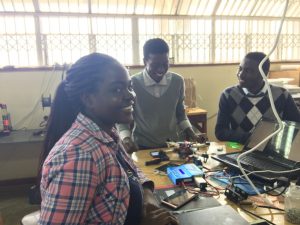
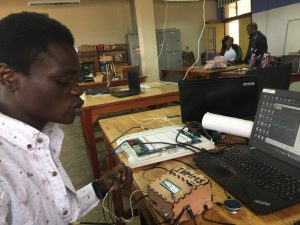
After the presentation of the technologies, we had a great lunch and I was able to catch up with some of the Poly students that I had met in Houston two summers ago. The Cervical Cancer Training Kit Project that I have been working actually began that summer with the Malawian interns. It was such an amazing moment because I had promised them that I would visit them in Malawi. We reminisced on our time back in Houston and made plans for hanging out in Malawi!
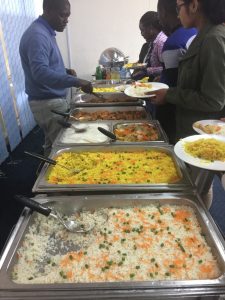
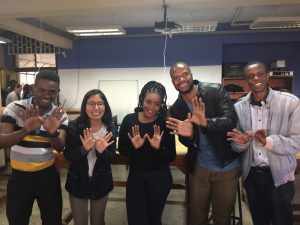
Day 6-8
Tuesday-Thursday June 12-14, 2018
Staying Optimistic
The rest of the week we split into two groups and visited four hospitals. Angela, Franklin and I traveled with Jossef, a lecturer at the Poly. Akshaya and Sajel traveled with Prince (a nurse at Queens), and Andrew (staff at the design studio). The visits to the hospitals were eye opening, humbling and motivational. Despite the lack of resources in these hospitals, the staff are so hardworking and are doing their best to keep mothers and babies alive. They were also very welcoming to us and open to collaboration for the development of devices that could help them out.
Goals Accomplished
- Visit four district hospitals (Zomba, Mulanje, Thyolo, and Queens)
- Observe the Neonatal and Maternal wards at each of the hospitals
- Receive feedback on our technologies from hospital nurses and staff
- Identify areas of need in neonatal and maternity wards
- Bring back potential project ideas to improve the neonatal and maternal wards
On Tuesday we visited the Zomba District Hospital. The first hospital visit was definitely the hardest. We first visited the neonatal ward then the labor ward. What we saw will stick with me forever. As we walked into the NICU (something that we would probably never be able to do in the U.S.) we saw around 20 babies in a hot room (since there were no incubators, the entire room was kept at a high temperature). Many of the premature babies were sharing a small heated bed (meant for only one baby) and were receiving oxygen from an oxygen tank. In the labor ward, the “rooms” were separated by curtains and we could hear some of the mothers in labor as we were talking with the nurses. It was a very similar situation at each of the hospitals that we visited. There were so many differences between these district hospitals and any hospital I’ve ever been to before.
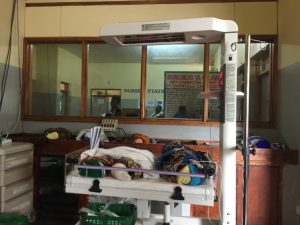
At first, it was difficult to process so much information at once. We observed so much that could use improvement. As we asked the nurses about the resources they had, we began to see many deep rooted problems that were out of our control. For example, the shortage of nurses was a huge problem which was caused by lack of funding. Many babies are dying at night because there is only one nurse watching both the labor ward and the neonatal ward. Additionally, the power outages (caused by an unstable power grid) often leave babies without life saving heat and/or oxygen. At first, the future seemed grim without the availability of these resources. However, there is definitely a lot more that can be done to help. It was inspiring to see that the B-CPAP machine (donated to these hospitals and designed by Rice 360) was already making a huge difference in many of the hospitals and saving babies’ lives. This helped me stay optimistic. I am motivated to help in any way possible.
With help from the nurses and hospital staff we were able to understand what problems the hospitals are facing and the causes of these problems. I took many notes on the conditions of the hospitals and the questions that were answered by the nurses.
Key observations
- Infant and maternal monitoring is difficult with low number of nurses
- Patient temperature is a key indicator of their condition and needs to be monitored more often
- Heart rate is also a key indicator that is not monitored very often
- Low nurse to patient ratios makes it very difficult to monitor any patient at a regular basis
- Dusty, humid and high temperature conditions as well as power outages affect the function of medical devices designed for use in other countries
- Many oxygen concentrators (provide oxygen to patients) break because of the dust in the air
- Many devices are fried through power surges
- Many (almost all) medical devices are donated and (e.g. incubators, syringe pumps, oxygen concentrators) end up broken
- Many nurses don’t know how to operate the devices and don’t have time to learn so some devices end up completely unused
- There is no standard for the devices that are donated (There are many different brands of the same device and they all operate differently)
- Many of the devices that are used, aren’t used properly (no training or manuals) so they break.
- Once the devices break, they can’t be fixed because the spare parts are not manufactured in Malawi and they can’t order 10 different spare parts for 10 different devices of the same type (e.g. there are 10 different kinds of filters for oxygen concentrators because there are 10 different brands)
- The hospitals are dependent on donations of certain non reusable medical products and medical devices (e.g. glucosticks, feeding tubes, syringes) that aren’t manufactured in Malawi and often run out
- Education surrounding preventable diseases is helpful
- Diseases such as cervical cancer, hospital acquired infection, or infant pneumonia is preventable if people are informed on the causes and on preventative measures
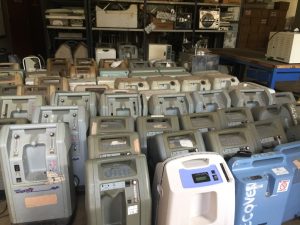
We hope that with this information we can make devices that can alleviate some of the difficulties that nurses are facing in the hospitals. I especially want to create SUSTAINABLE devices that are fit for the environment and users (cultural differences must also be accounted for) in these hospitals. I especially want to focus on education because it is a key factor in prevention of many diseases.
Day 9-11
Friday-Sunday June 15-17, 2018
Eid Mubarak!
We had a long weekend because 30% of Malawi is Muslim and Friday was the end of Ramadan! We spent the weekend visiting the markets, walking around and getting to know our neighborhood. Friday we went to the Blantyre market and to Veg delight (an Indian restraint in Blantyre). Saturday we went to Limbe Market and bought fruits and beautiful cloths. Today (Sunday) we plan on watching the Germany vs Mexico World Cup Match!!
